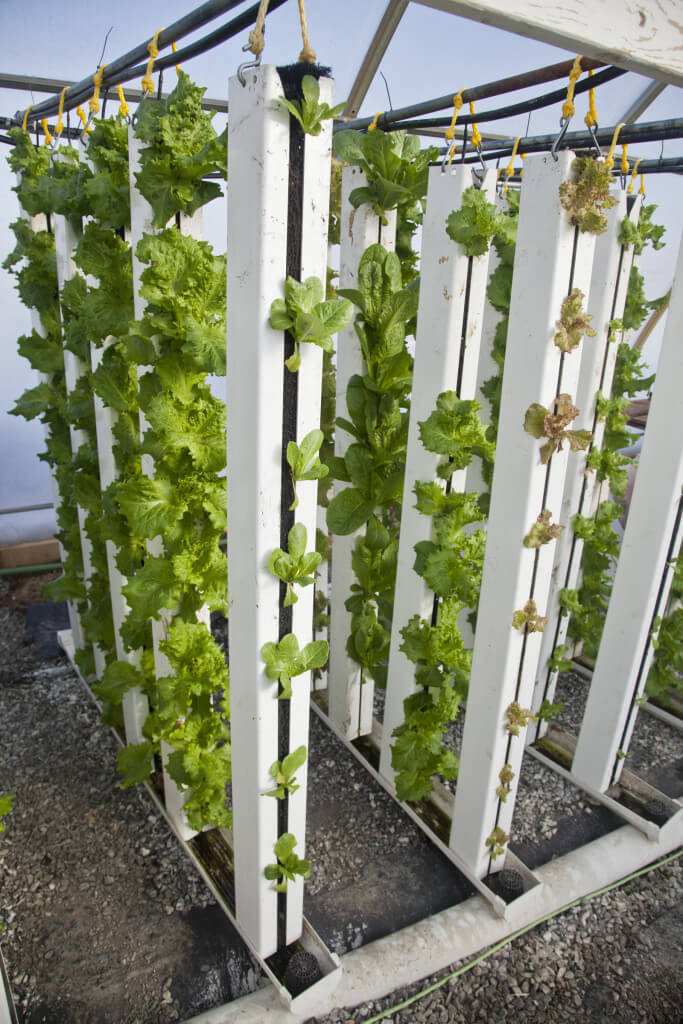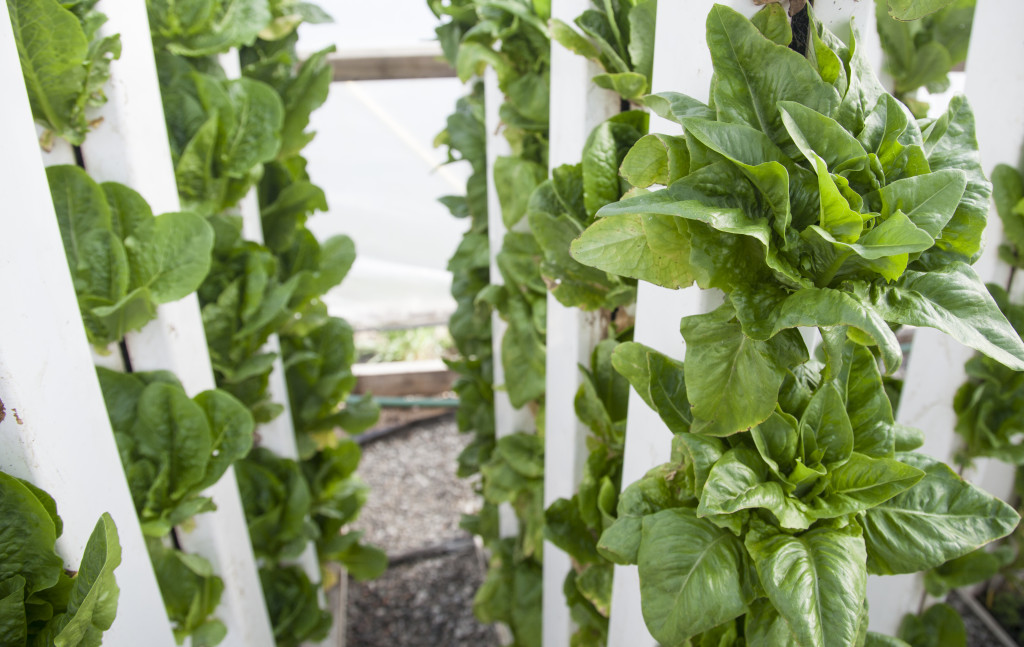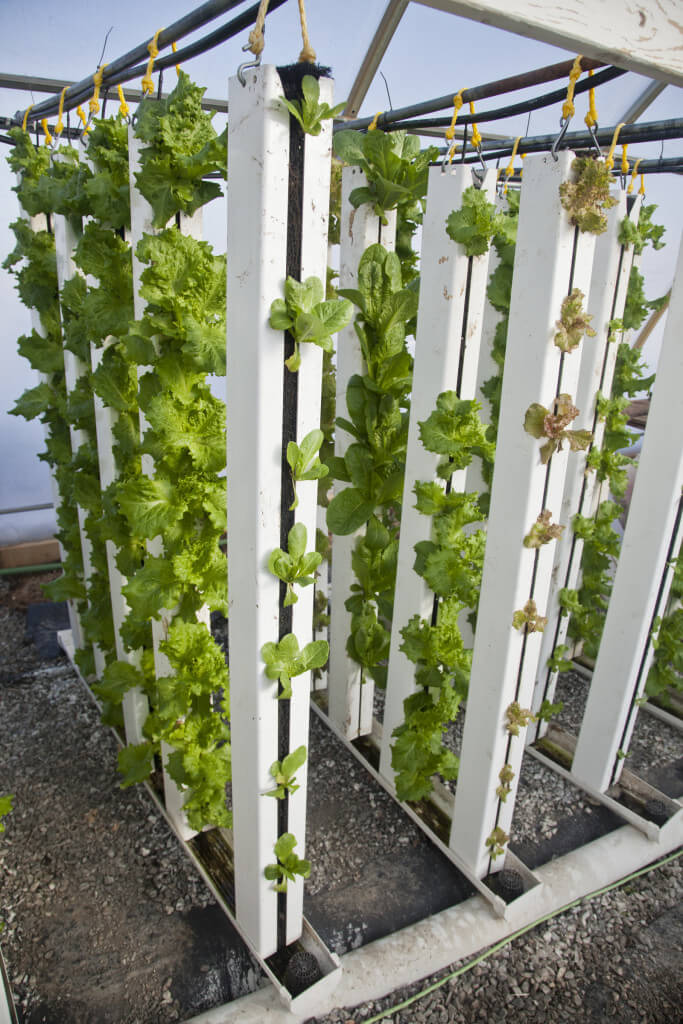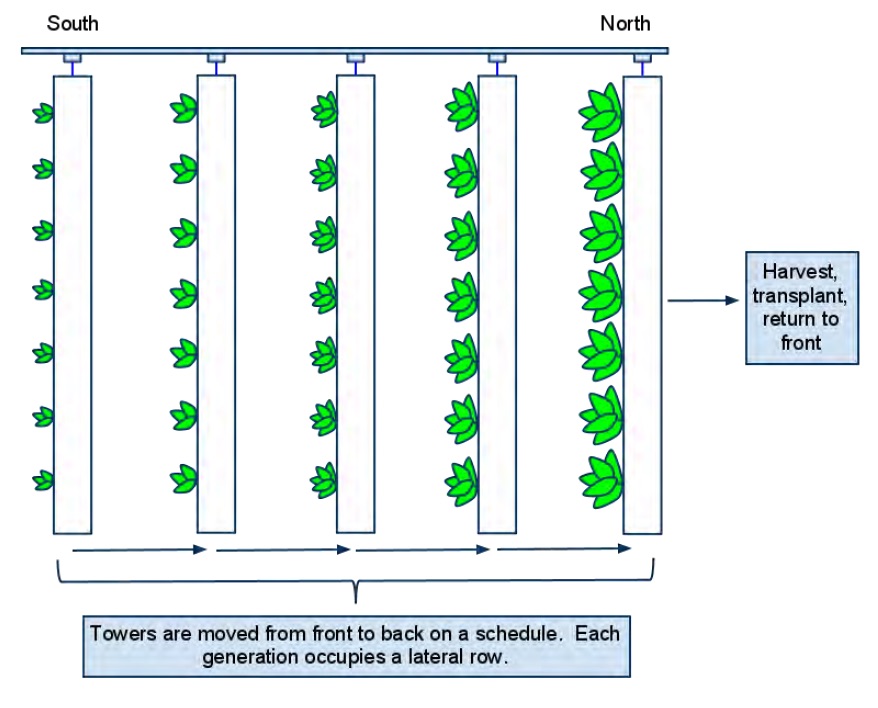Conveyor Cropping to Maximize Light and Yields
So you’re running a successful vertical farm using ZipGrow Towers. Wonderful!
Are you using a conveyor system? If not, then this is the post for you.
Using a conveyor system allows for just that much more light efficiency in your system. You’ll get a little more growth out of the plants in less time.
Plus, having all of your ready-to-harvest towers at the back of the row and ready to remove simplifies harvesting logistics.
And don’t worry – using a conveyor system doesn’t require any fancy or expensive technology. (We aren’t talking about conveyor belts. This is all manual.)
What is a conveyor system?
 A conveyor system is a method of planting, harvesting, and moving ZipGrow towers that allows you to continuously produce greens and herbs while maximizing light use in the greenhouse.
A conveyor system is a method of planting, harvesting, and moving ZipGrow towers that allows you to continuously produce greens and herbs while maximizing light use in the greenhouse.
Implementing a conveyor system is very simple using our tower-hanging rack design. If you use racks, you’re already half way there!
A conveyor system works particularly well with crops on a 5-week turn, like most greens, since the racks are designed to hold towers in rows that are 5 towers deep.
First, keep all the towers facing south.
If you’re in the northern hemisphere, south-facing towers receive the most and most consistent light all day long. (If you’re in the southern hemisphere, the opposite is true – you want to keep your towers facing north.)
This is something to keep in mind as you install your racks – you’ll want to keep your racks oriented so that towers are facing the right direction.
Keep newly planted towers at the front of the rack, and move ready-to-harvest towers towards the back.
Place newly-planted towers in the front, most southern-facing position.
Each week, move towers back one position by sliding them along the bar they are hanging from.
After 5 weeks, the towers at the back of the row will be ready to remove for harvest.
By placing younger, smaller plants at the front of the row, light can reflect off the ZipGrow towers all the way back to the most mature plants.
If mature plants were placed in front, their large leaves would shade out plants further back in the row.
From the Data…
This is a topic discussed in detail in “Vertical Aquaponic Crop Production Towers and Associated Produce Sales and Distribution Models: Design, Development, and Analysis” by Dr. Nate Storey.
According to Storey (2012):
Single axis light management: In horizontal one dimensional management methods, towers are arranged in rows, each corresponding with a seedling generation. There are as many rows per block as weeks or other harvest-related time units in the production cycle. For instance, a 4 week production trial would have four rows per block. On a weekly cycle, the last row of towers is removed and sent to market, the anterior rows are moved back, and the southernmost row (Row 1) is filled with towers containing newly transplanted seedlings. By continuously moving maturing plants to the rear of the tower mass, light is conserved horizontally, with less interference from immature towers forward in the tower mass. This technique can be implemented a number of ways, including with large numbers of rows, or multiple unmovable and consecutive blocks. When towers cannot be physically moved, towers are harvested and replaced row by row, establishing a similar pattern of minimized light interference within a set tower grid. This requires higher center to center spacing values for access to perform harvest and replacement procedures. Both of these embodiments are referred to as single-pull conveyor because towers are pulled once in the initial transplanting procedure per growing cycle, and then towers are moved consecutively to the rear. This was the most common type of light management production style used in unidirectional vertical hydroponic greenhouse production (p. 171).
Appendix 0.05 A side illustration of single axis light management in the tower block (Single-Pull, Horizontal Conveyor). Towers are placed based upon the generation they contain. Young towers are placed on the sun-facing side and moved sequentially to the rear with the harvest of older generations. In this way, minimal interference in the front appears to result in lessened shading effects in the rear of the tower mass.
Is Conveyor Cropping the Only Way?
Nope! You don’t have to use a conveyor system.
Plants will grow equally well in a massed (non-conveyor) configuration, where each tower in the block has plants of the same age.
ZipGrow towers are designed to maximize light reflection, so every plant in the block will receive plenty of light to grow.
This type of production may also vary for commercial indoor applications using ZipRacks or any other type of indoor production technique.

Are you maximizing the light in your greenhouse?
If not, then now is the time to switch to conveyor cropping and get more out of your system.
If you already have racks, it will take an hour or two to move them to conveyor cropping.
If you have any questions, ask for help in a quick email! We love helping our farmers.
Want to become an Upstart Farmer?
Check out Upstart University, the online training program to learning everything you need to become an Upstart Farmer. Courses made of videos, written content, quizzes, and assignments are designed to empower and equip you.
For $10 a month (redeemable at purchase), aspiring farmers have nothing to lose. Register now.







